I’ll never forget the first time my grandmother told me the story of the tortoise and the hare. I was probably seven, fidgeting on her porch swing, convinced I already knew how it ended. But something about the way she told it – with that knowing smile when the hare decided to nap – made me realize these old stories weren’t just for kids. They were for anyone who’d ever felt like giving up when things got tough.
It wasn’t until years later, while researching story structures for a writing project, that I discovered there are literally thousands of these stories floating around – scholars have identified over 1,940 distinct tale types in international folklore collections according to EBSCO’s comprehensive research on folktale classification systems. What struck me most was realizing that despite our smartphones and social media, we’re still drawn to the same basic stories that people shared around fires centuries ago.
Look, these aren’t just bedtime stories. They’re like having a wise friend who’s been around the block a few thousand times. These folk tales are treasure troves of life lessons that have survived countless retellings because they nail something true about being human. Whether you’re exploring classic folktales for school or just looking for some wisdom that actually makes sense, understanding what makes these stories stick around can teach you a lot about what really matters.
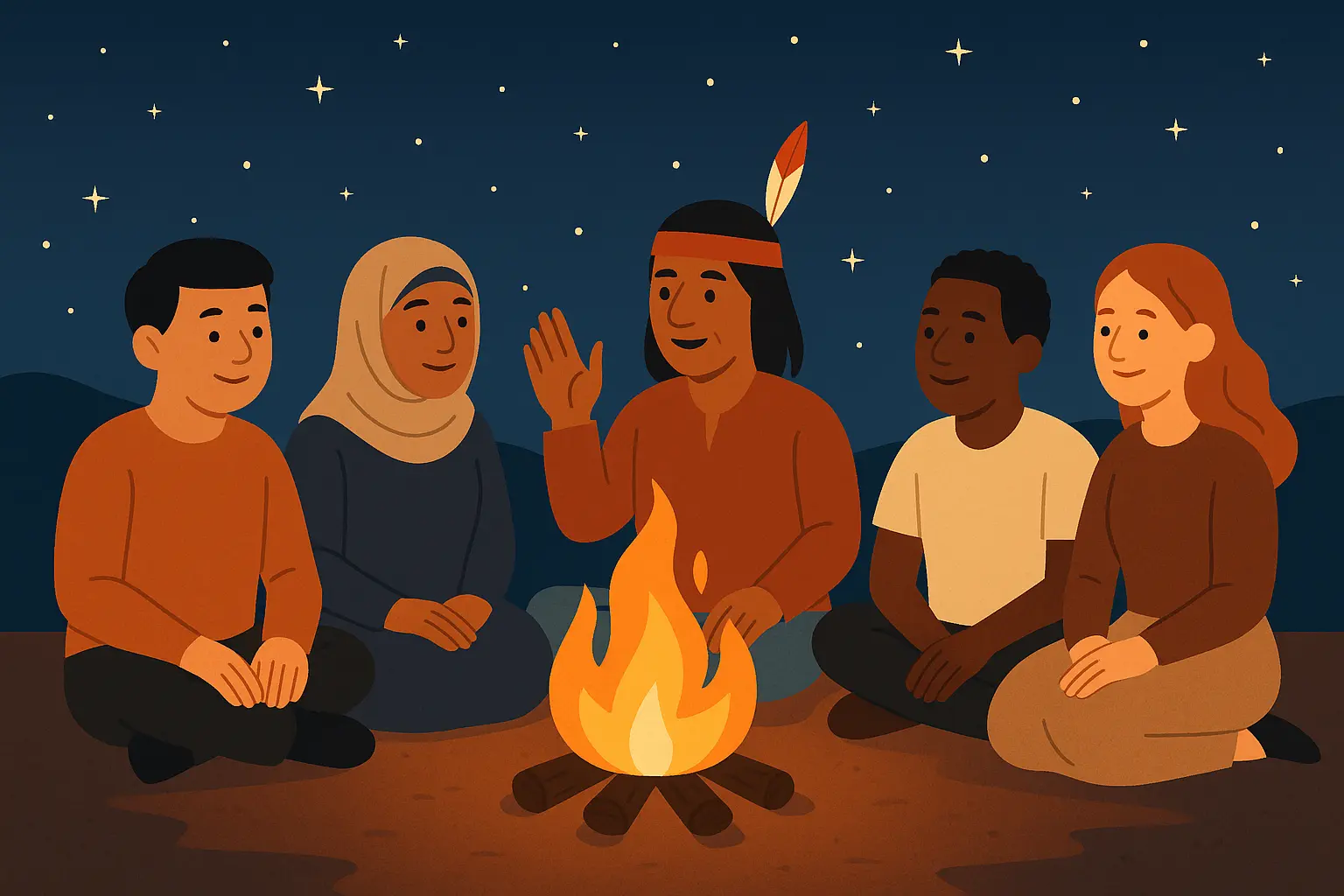
Table of Contents
-
How to Spot the Good Stuff (Not All Old Stories Are Worth Your Time)
-
25 Stories That Actually Matter, Sorted by What They Teach You
-
Life Lessons and Smart Choices
-
Courage When Things Get Scary
-
Love and Relationship Reality Checks
-
Justice and Doing the Right Thing
-
Being Clever When You Can’t Be Strong
-
Growing Up and Figuring Yourself Out
-
-
Three Stories That Actually Changed How I Think About Life
-
Which Stories Actually Hold Up (And Which Ones Feel Dated)
-
Why These Old Stories Still Matter (Even If You Never Read Fairy Tales)
-
The Real Reason These Stories Matter
Here’s the Gist
-
Six things help you spot the folktale stories worth your time: they feel authentic to their culture, deal with stuff we all face, tell a good story, work for the right age group, teach you something useful, and can be adapted without losing their point
-
25 carefully picked folktales cover six different life areas, each showing you something real about human nature and how to be a decent person
-
The wisdom stories score highest because they work for everyone and give clear life lessons
-
Complex stories show you storytelling tricks that modern writers can learn from
-
Trickster tales need some cultural background but teach great lessons about using your brain instead of your muscles
-
Growing-up stories are perfect for dealing with identity questions and personal change – super relevant for today
-
These timeless stories give you a blueprint for creating engaging modern content that actually means something to people
How to Spot the Good Stuff (Not All Old Stories Are Worth Your Time)
Picking the right folktale stories isn’t about grabbing the most famous ones – it’s about figuring out what makes certain stories stick around for centuries while others get forgotten. When I’m looking for folktales that are actually worth reading, whether for fun or to teach someone something, I’ve learned to look for six specific things that separate the keepers from the duds.
Understanding these basics becomes even more valuable when you’re exploring story themes that resonate across cultures, since folktales show you how universal themes create stories that last.
|
What to Look For |
What It Means |
Why It Matters |
|---|---|---|
|
Cultural Authenticity |
Keeps the original culture’s wisdom and values |
Preserves real heritage and avoids ripping off other cultures |
|
Universal Themes |
Deals with stuff everyone experiences |
Works for different people and stays relevant over time |
|
Narrative Structure |
Has compelling story arcs and characters you remember |
Creates engaging, well-paced stories that hold your attention |
|
Age Appropriateness |
Matches content difficulty to who’s reading it |
Makes sure people actually understand and connect with it |
|
Educational Value |
Teaches practical life lessons or cultural insights |
Gives you something lasting beyond just entertainment |
|
Adaptability |
Can be changed for different situations while keeping the main message |
Lets you use it in different ways and formats |
Does It Feel Authentic to Its Culture?
Real folktales carry the genuine wisdom and values of where they came from. You want versions that keep their cultural integrity, not sanitized adaptations that strip away everything meaningful. This doesn’t mean the language has to sound ancient, but the core cultural stuff should stay intact and be presented respectfully.
Does It Deal with Stuff We All Face?
The most powerful folktales tackle fundamental human experiences that work no matter who you are or when you live. These stories handle themes like justice, love, courage, and wisdom in ways that still matter today. They give clear moral guidance without being preachy or dumbed down.
Think about how “treat others the way you want to be treated” shows up everywhere: Christians say “Do unto others as you would have them do unto you,” Buddhists say “Hurt not others in ways that you yourself would find hurtful,” and African Ubuntu philosophy says “I am because we are.” Folktales that capture these shared human values work because they speak to what we all care about.
Does It Tell a Good Story?
Good folktales follow compelling story arcs with characters you remember, conflicts that matter, and endings that feel satisfying. The pacing should grab you right away and keep you interested throughout. Strong folktales also use language that’s easy to understand but rich enough to paint pictures in your head.
Is It Right for Your Audience?
Think about who’s going to read or hear these stories. Some folktales deal with complex moral situations that work better for mature audiences, while others are perfect for kids. The vocabulary, concepts, and themes should match what your audience can handle and relate to emotionally.
Will You Actually Learn Something?
The best folktale stories give you more than just entertainment – they offer practical life lessons, cultural insights, or educational content that gets you thinking long after you’re done. These stories should give you something to chew on, not just pass the time.
Can You Actually Use It?
Quality folktales can be adapted for different situations while keeping their main message. Whether you’re telling them out loud, writing them down, using them in school, or getting creative with them, versatile folktales work in different contexts without losing what makes them special.
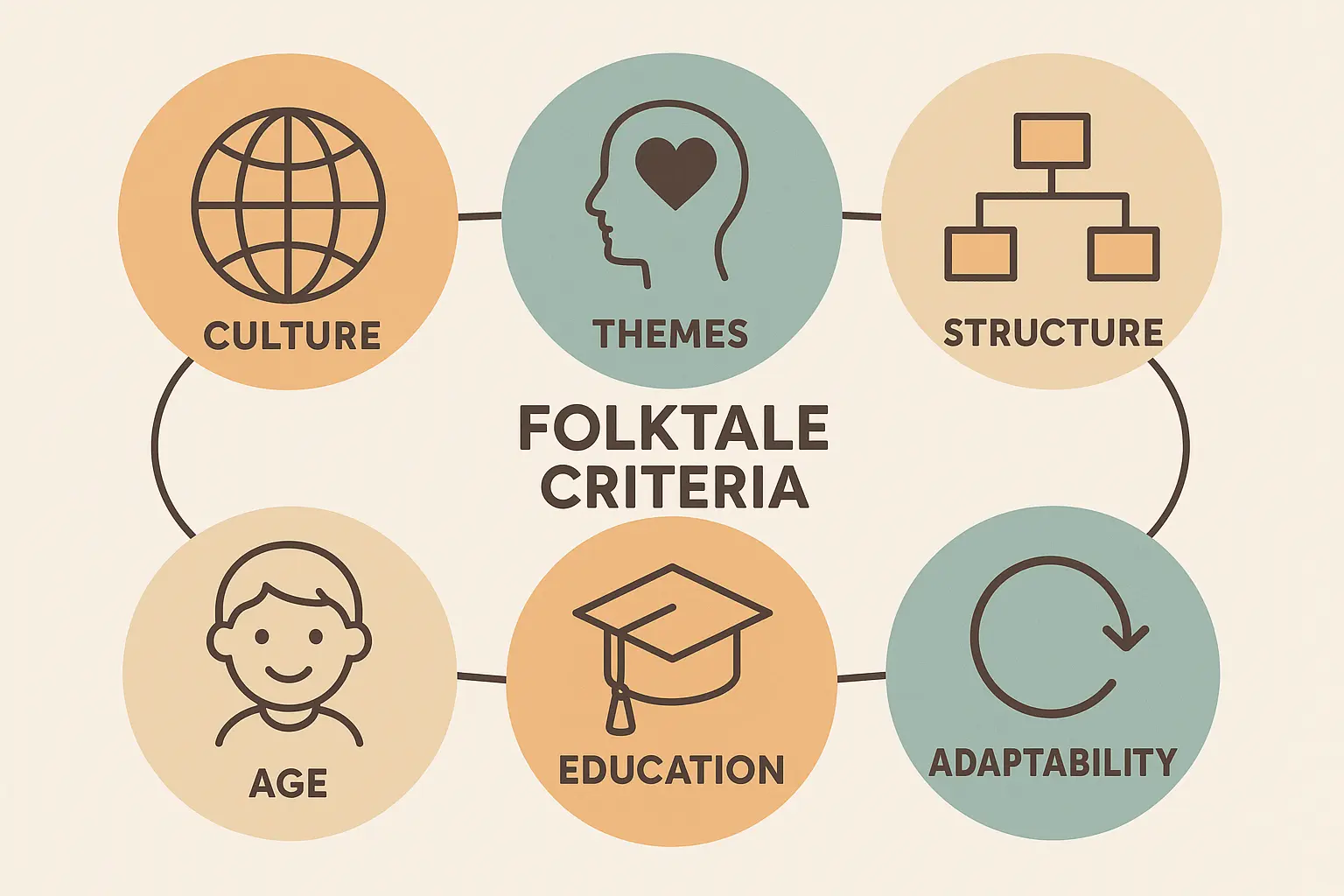
25 Stories That Actually Matter, Sorted by What They Teach You
Life Lessons and Smart Choices
These five stories focus on practical wisdom, good judgment, and what happens when you make certain choices. They give you clear guidance on making better decisions and understanding why patience, preparation, and honest communication matter in daily life.
1. The Tortoise and the Hare
This classic shows how steady effort often beats natural talent without dedication. An overconfident hare challenges a slow tortoise to a race, then takes a nap halfway through, letting the steady tortoise win. The story teaches that sticking with it and being reliable matter more than just being naturally good at something. This example of a folktale perfectly shows how simple stories can teach you profound stuff about work ethic and staying humble.
2. King Solomon’s Judgment
When two women claim the same baby, the wise king threatens to cut the child in half. The real mother immediately gives up her claim to save the child, revealing who she really is through her selfless love. This Hebrew tale shows how real wisdom understands human nature rather than just following rigid rules.
3. The Ant and the Grasshopper
A hardworking ant spends summer gathering food while a carefree grasshopper plays music. When winter comes, the starving grasshopper begs for help from the well-prepared ant. This folktale emphasizes planning ahead and balancing work with fun.
4. The Blind Men and the Elephant
Several blind men touch different parts of an elephant and argue about what it really is – one feels the trunk and says it’s a snake, another touches the leg and thinks it’s a tree. This Indian tale teaches about the limitations of seeing things from just one perspective and the danger of jumping to conclusions from incomplete information.
5. The Boy Who Cried Wolf
A shepherd boy repeatedly raises false alarms about wolves attacking his flock. When a real wolf shows up and he calls for help, nobody believes him anymore. This cautionary folktale shows how lying destroys your credibility and trust.
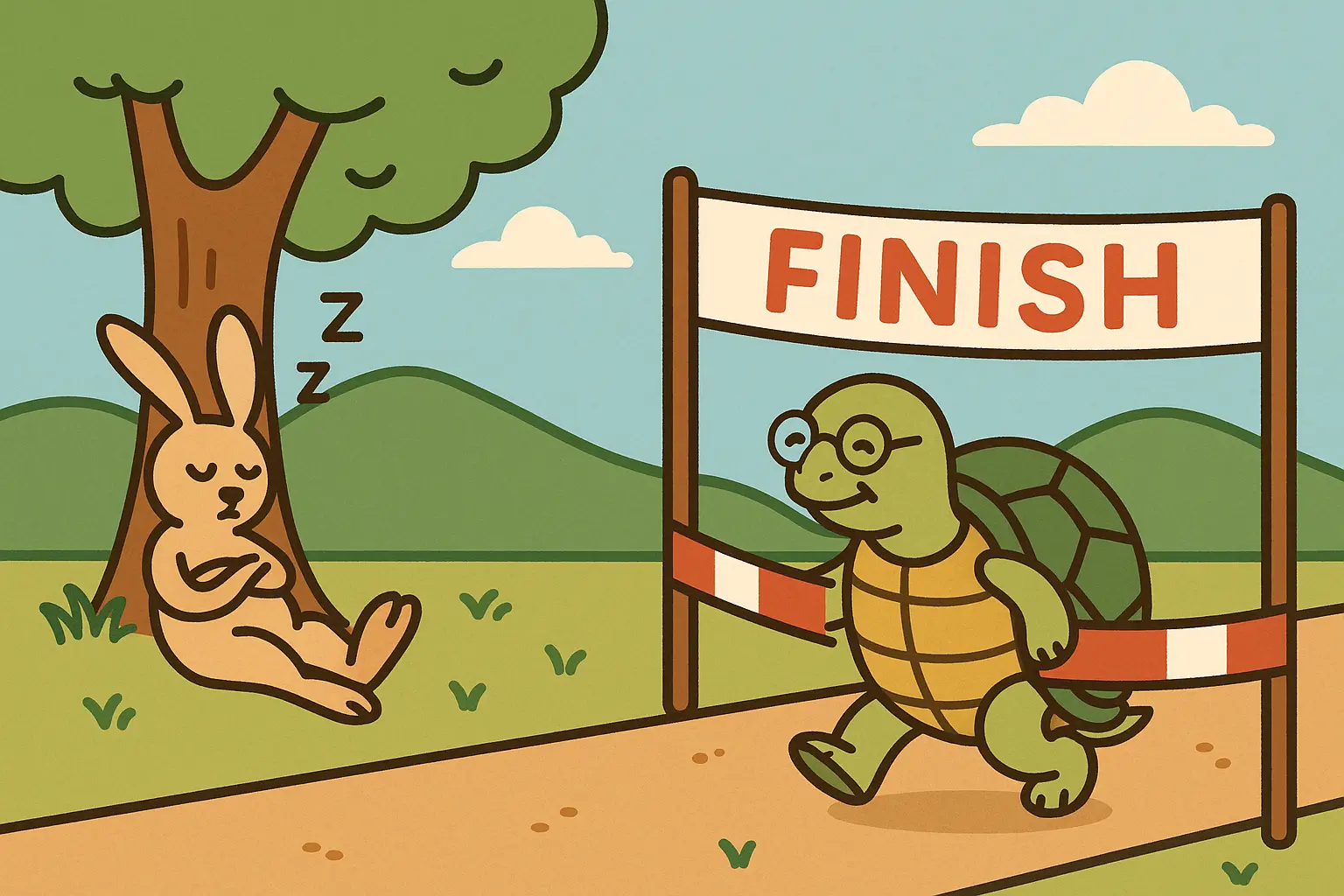
Courage When Things Get Scary
These four stories celebrate different kinds of bravery, from physical courage in battle to the moral strength needed to challenge unfairness. They show how real heroism often comes from character rather than size or strength.
6. David and Goliath
A young shepherd defeats a giant warrior through faith, courage, and smart thinking rather than brute force. Armed only with a sling and stones, David’s victory shows that intelligence and determination can overcome seemingly impossible odds.
7. Mulan
A Chinese daughter disguises herself as a man to take her elderly father’s place in the army. Through years of service, she proves herself as a capable warrior while keeping her secret. Her story deals with family loyalty, gender roles, and personal sacrifice.
8. The Little Engine That Could
A small engine succeeds in pulling a heavy train over a mountain where bigger engines failed, powered by the mantra “I think I can.” This American tale emphasizes the power of positive thinking and determination in overcoming obstacles.
9. Anansi and the Wisdom of the World
The West African trickster spider tries to collect all wisdom in a pot and hide it for himself. When his young son offers helpful advice during his climb to hide the pot, Anansi realizes wisdom can’t be hoarded and scatters it for everyone to share.
These heroic folktales share structural similarities with many short story examples that feature character transformation through courage and moral testing.
You see these courage tales everywhere in modern life. Leadership training programs use “David and Goliath” to teach employees about tackling seemingly impossible challenges, while therapists often reference “The Little Engine That Could” when helping clients build confidence and persistence.
Love and Relationship Reality Checks
These four stories explore the messy reality of love, sacrifice, and human connection. They look at both the transformative power of genuine affection and the tough choices that relationships sometimes require.
10. Beauty and the Beast
A young woman learns to see past a monster’s frightening appearance to discover his kind heart. Through her compassion and friendship, she breaks the curse that transformed him, teaching about the importance of inner beauty and the power of acceptance.
11. The Little Mermaid
A mermaid gives up her voice and underwater life for the chance to win human love. Hans Christian Andersen’s original tale explores the painful costs of chasing dreams and the complexity of unrequited love.
12. Orpheus and Eurydice
A musician’s beloved wife dies from a snake bite, prompting his journey to the underworld to bring her back. His music moves even Hades, who agrees to return Eurydice – but Orpheus must not look back until they reach the surface. This Greek myth looks at love, loss, and the importance of trust.
13. The Frog Prince
A princess reluctantly keeps her promise to a frog who helped get her golden ball back. When she finally shows him kindness, he transforms into a handsome prince. This German tale teaches about honoring commitments and looking beyond surface appearances.
These relationship-focused folktales show how love requires sacrifice, understanding, and the courage to see beyond what’s on the surface – themes that are just as relevant today as they were centuries ago.
Justice and Doing the Right Thing
These four stories tackle themes of fairness, honesty, and moral courage. They show how justice ultimately wins out and demonstrate the importance of standing up for what’s right, even when it’s difficult or dangerous.
14. Robin Hood
The legendary outlaw steals from corrupt nobles to help the poor and oppressed. His adventures in Sherwood Forest represent the fight against injustice and the moral complexity of breaking unjust laws to serve a higher good.
15. The Golden Goose
A kind young man shares his small meal with a mysterious old man, who rewards him with a golden goose. Those who try to steal from him get stuck to the goose, creating a funny parade that ultimately leads to the young man winning a princess’s hand through his generosity.
16. The Emperor’s New Clothes
Vain rulers get tricked by con artists who claim to weave invisible clothes that only smart people can see. Everyone pretends to admire the nonexistent clothes until a child points out the emperor’s nakedness. This Danish tale makes fun of vanity, groupthink, and the courage needed to speak truth.
17. Cinderella
A mistreated stepdaughter’s kindness gets rewarded when her fairy godmother helps her attend the royal ball. Despite her stepfamily’s cruelty, she stays gentle and ultimately finds happiness. This universal tale appears in cultures worldwide, emphasizing that goodness eventually gets recognized and rewarded.
These folktale stories with
These folktale stories with moral lessons show how justice, though sometimes delayed, ultimately wins when good people maintain their integrity despite adversity.
Being Clever When You Can’t Be Strong
These four stories celebrate intelligence, wit, and resourcefulness as tools for overcoming challenges. They show how clever thinking can triumph over physical strength or social power, often with hilarious results.
18. Anansi the Spider
Various West African tales feature the clever spider who uses wit to solve problems and outsmart stronger opponents. These stories teach problem-solving skills while preserving important cultural wisdom about intelligence beating brute force.
19. Coyote Stories
Native American tales of the trickster coyote mix humor with serious lessons about consequences, respect for nature, and the importance of balance. Coyote’s adventures often result from his own greed or foolishness, teaching through negative examples.
20. Nasreddin Hodja
This Turkish wise fool appears in stories throughout the Middle East, often acting in seemingly silly ways that contain deep wisdom. His tales use humor and paradox to comment on human nature and social issues.
21. Br’er Rabbit
African American folklore features the clever rabbit who consistently outwits stronger animals. These stories, rooted in African traditions, became important cultural narratives about survival and resistance through intelligence.
Each folktale example in this category shows how wit and cleverness can level the playing field between the powerful and the powerless, making these folktales particularly valuable for understanding social dynamics and problem-solving strategies.
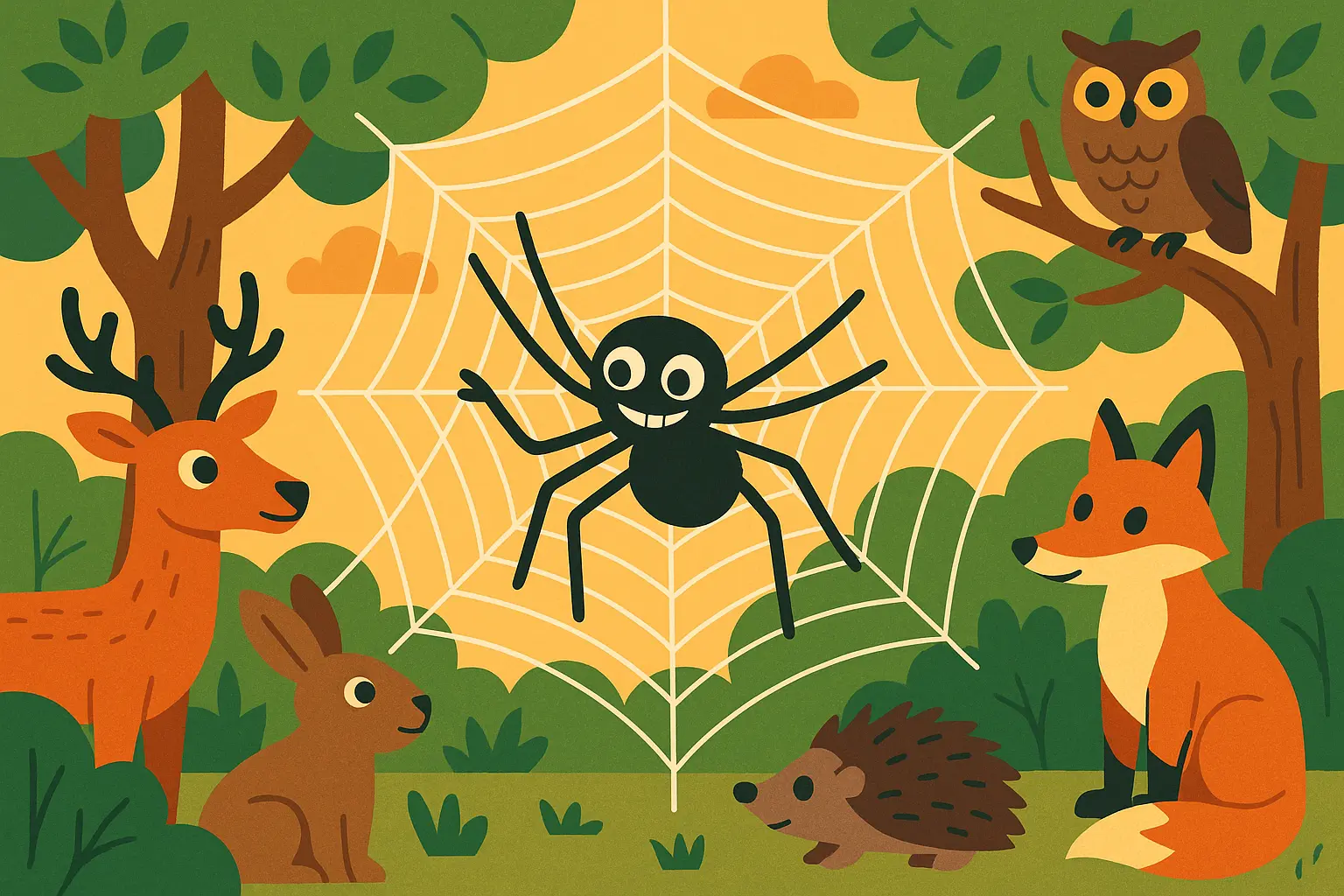
Growing Up and Figuring Yourself Out
These four stories focus on personal development, self-discovery, and the journey toward becoming your true self. They deal with themes of identity, acceptance, and the often difficult process of meaningful change.
22. The Ugly Duckling
A young bird endures rejection and ridicule for being different, only to discover he’s actually a beautiful swan. Hans Christian Andersen’s tale addresses bullying, self-acceptance, and the patience required for personal growth and self-discovery.
23. Pinocchio
A wooden puppet’s journey to become a real boy requires learning honesty, responsibility, and moral courage. Carlo Collodi’s Italian tale uses fantastical elements to explore the development of conscience and character.
24. Rumpelstiltskin
A miller’s daughter must discover a mysterious creature’s name to save her firstborn child. This German tale explores themes of power, desperation, and the importance of names and identity in folklore traditions.
25. The Selkie Wife
Celtic stories tell of seal-people who can shed their skins to become human. Often, a fisherman steals a selkie woman’s skin, forcing her into marriage. These tales explore themes of freedom, captivity, identity, and the tension between different worlds or ways of life.
This example of a folktale story shows how transformation narratives address fundamental questions about identity and belonging that work across all cultures and time periods.
These transformation folktales share thematic elements with contemporary bedtime stories that help children process change and personal growth in their own lives.
|
Story Category |
Most Common Themes |
Target Audience |
Modern Applications |
|---|---|---|---|
|
Life Lessons & Smart Choices |
Patience, planning, honesty |
All ages |
Business training, education |
|
Courage When Things Get Scary |
Bravery, perseverance, faith |
Children to adults |
Leadership development, motivation |
|
Love & Relationship Reality Checks |
Sacrifice, acceptance, commitment |
Teens to adults |
Counseling, relationship education |
|
Justice & Doing the Right Thing |
Fairness, truth, consequences |
All ages |
Ethics training, social commentary |
|
Being Clever When You Can’t Be Strong |
Intelligence, humor, resourcefulness |
Children to adults |
Problem-solving, cultural education |
|
Growing Up & Figuring Yourself Out |
Identity, change, self-acceptance |
Children to adults |
Personal development, therapy |

Three Stories That Actually Changed How I Think About Life
The Tortoise and the Hare: Why Simple Stories Hit the Hardest
I used to hate this story because it felt too simple. Like, duh, don’t be lazy. But then I started my own business and watched flashier competitors burn out while I just kept plugging away, and suddenly I got it. This isn’t about being slow – it’s about being sustainable.
A hare mocks a slow-moving tortoise and challenges it to a race. The hare quickly leaves the tortoise behind and, confident of winning, takes a nap midway through the race. When the hare wakes up, he finds that the tortoise, moving slowly but steadily, has arrived before him.
That hare? He’s every startup that raises millions and flames out in two years. He’s every student who aces the first few tests and then bombs the final because they stopped studying. The tortoise is that friend who shows up every day, does the work, and somehow ends up ahead of everyone else who was supposedly more talented.
The genius is in the crystal-clear message: “Slow and steady wins the race.” Consistent effort often beats natural ability without dedication. This folktale works because it addresses something we’ve all experienced – watching persistence triumph over talent.
King Solomon’s Judgment: The Ultimate Test of What Really Matters
Okay, so there’s this story about King Solomon that’ll blow your mind. Two women show up claiming the same baby is theirs – classic custody nightmare, right? Solomon’s solution? “Fine, let’s cut the baby in half.” Sounds brutal, but here’s the genius part: the real mom immediately goes “NO! Give her the baby!” while the fake one’s like “Sure, whatever.” Boom. Problem solved.
This Hebrew folktale demonstrates sophisticated psychological insight. True wisdom often reveals itself through understanding human nature and emotions rather than following rigid rules. It’s basically the ultimate test of who really loves someone – are you willing to lose them to keep them safe?
I think about this story every time I see parents fighting over custody or friends arguing over who gets credit for an idea. The person who really cares is usually the one willing to step back if it means protecting what matters most.
Mulan: When Breaking Rules Is Actually Following Your Heart
When the Chinese emperor calls for one man from each family to serve in the army, Fa Mulan’s elderly father gets chosen despite his frail health. Unable to bear the thought of her father dying in battle, Mulan disguises herself as a man and takes his place. Through years of service, she proves herself as a capable warrior while hiding her true identity. When her deception gets discovered, her comrades and commanders are so impressed by her bravery and skill that she gets honored rather than punished.
This folktale deals with family loyalty, gender roles, courage, and the idea that heroism comes from character rather than gender or social expectations. Its complexity allows for multiple interpretations while maintaining clear moral guidance.
What gets me about Mulan is how she breaks every rule to follow the most important one – taking care of family. She commits fraud, lies to everyone, and risks execution, all because she loves her father too much to let him die. It’s the perfect example of how sometimes doing the right thing means doing the wrong thing.
The narrative techniques used in these classic folktales mirror many principles found in effective storytelling that engages readers through emotional resonance and universal themes.
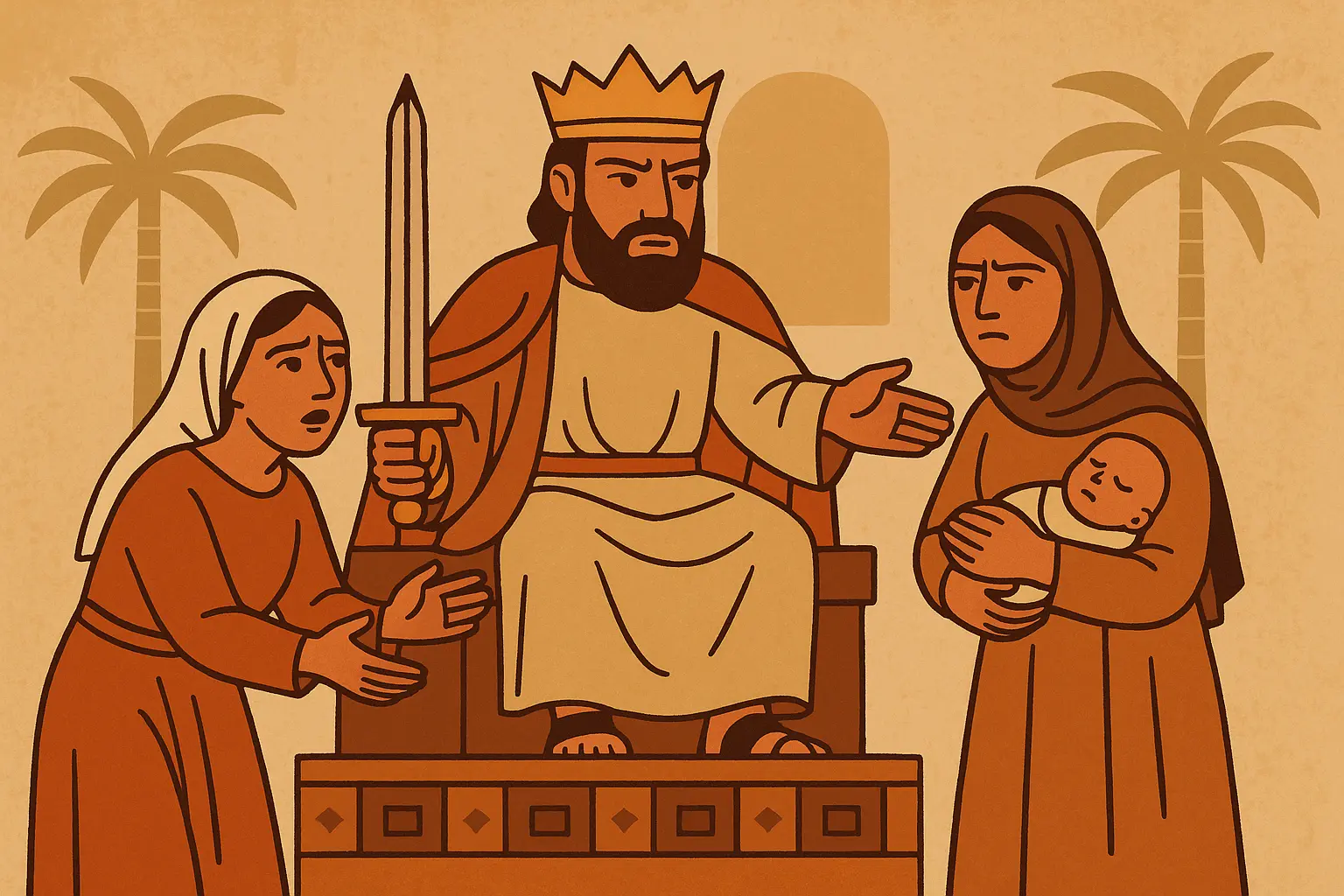
Which Stories Actually Hold Up (And Which Ones Feel Dated)
Some of these tales age like fine wine, others like milk left in the sun. After reading through hundreds of folktales over the years, I’ve noticed clear patterns in what works across cultures and time periods versus what needs cultural context to make sense.
|
Story |
Cultural Authenticity |
Universal Themes |
Narrative Structure |
Age Appropriateness |
Educational Value |
Adaptability |
Overall Score |
|---|---|---|---|---|---|---|---|
|
The Tortoise and the Hare |
High |
Excellent |
Strong |
All Ages |
High |
Excellent |
9.5/10 |
|
King Solomon’s Judgment |
High |
Excellent |
Compelling |
Teen+ |
Excellent |
Good |
9.0/10 |
|
Mulan |
High |
Excellent |
Strong Epic |
All Ages |
Excellent |
Excellent |
9.5/10 |
|
Beauty and the Beast |
Good |
Excellent |
Strong |
All Ages |
High |
Excellent |
8.5/10 |
|
Robin Hood |
Good |
Good |
Strong |
Teen+ |
High |
Good |
8.0/10 |
|
Anansi Stories |
Excellent |
Good |
Good |
All Ages |
High |
Good |
8.0/10 |
The Tortoise and Hare: Still Perfect After All These Years
This one scores high across the board because it’s basically foolproof. The cultural authenticity stays strong – it’s a well-preserved piece of Aesopic wisdom. The universal themes are excellent since work ethic and perseverance are valued everywhere. The story structure is rock solid with a clear beginning, middle, and end featuring characters you remember. Age-wise, it works for everyone from five-year-olds to fifty-year-olds. Educational value is high for teaching work ethic and humility. And adaptability? Excellent – you can easily modify this folktale for any context without losing what makes it special.
King Solomon’s Judgment: Gets Better With Age
This tale shows high cultural authenticity, rooted firmly in ancient Hebrew wisdom tradition. Universal themes score excellent – wisdom, justice, and parental love work across all boundaries. The narrative structure is compelling with its dramatic conflict and clever resolution. Age-wise, it targets teens and adults since you need some life experience to fully appreciate the complex moral reasoning. Educational value earns top marks for teaching critical thinking and wisdom. Adaptability scores good – it applies well to legal, ethical, and leadership contexts.
Mulan: The Ultimate Crowd-Pleaser
Cultural authenticity ranks high, reflecting genuine Chinese values of family honor and duty. Universal themes score excellent – gender equality, family loyalty, and personal courage resonate globally. The narrative structure follows a strong epic journey with meaningful character development. Age-wise, it spans all demographics since the themes work on different levels. Educational value earns excellent marks for addressing social issues and personal growth. Adaptability scores excellent – successful adaptations across multiple media formats prove its versatility.
What Makes Some Stories Universal Winners
Life Lessons and Smart Choices consistently score highest across all criteria, with universal themes and excellent educational value. These folktales translate seamlessly across cultures and age groups, making them invaluable for educators and storytellers.
Courage and Heroism stories show strong narrative structures and broad appeal, though some need cultural context for full appreciation. Their inspirational messages tend to overcome cultural barriers.
Justice and Moral Lessons provide excellent educational value and adaptability, making them particularly useful for teaching and social commentary. They often address contemporary issues through timeless frameworks.
Trickster and Cleverness tales offer good entertainment value and cultural education but require more sensitivity in adaptation. Their humor and wit make them engaging, but cultural context is crucial for proper understanding.
Growing Up and Figuring Yourself Out stories excel in psychological and educational value, particularly for audiences dealing with identity and personal development issues. They speak directly to universal human experiences of change and self-discovery.
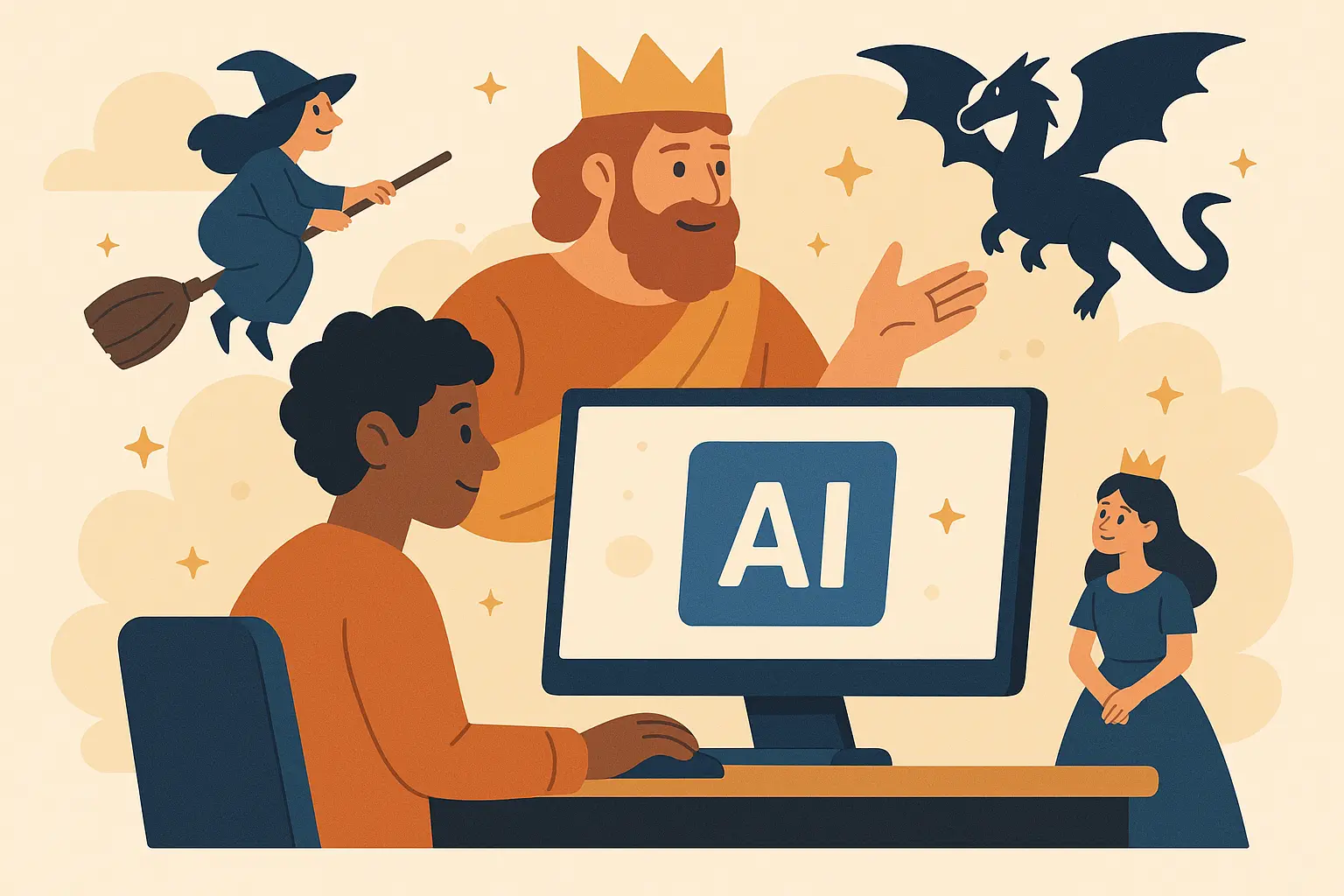
Why These Old Stories Still Matter (Even If You Never Read Fairy Tales)
I know what you’re thinking – “This is cute, but what does this have to do with my actual life?” More than you’d think. That story about the ant and grasshopper? It’s basically every personal finance blog ever written, just without the spreadsheets. Beauty and the Beast? It’s every relationship where you had to look past someone’s rough exterior (or they had to look past yours).
The timeless appeal of folktales lies in their ability to convey profound truths through engaging narratives – exactly what modern storytellers and content creators try to achieve. These traditional stories have been passed down and adapted across generations because they master fundamental storytelling principles that still work today.
A marketing team at a tech startup recently used the structure of “David and Goliath” to create their brand story, positioning themselves as the small, innovative company taking on industry giants. They adapted the tale’s core elements – an underdog with superior strategy defeating a larger opponent through intelligence rather than resources – to connect with their target audience of small business owners facing similar challenges.
Whether you’re struggling with crafting the perfect opening that grabs readers immediately (think
Whether you’re struggling with crafting the perfect opening that grabs readers immediately (think about the dramatic beginning of “David and Goliath”), developing characters with the depth and relatability of figures from folk tales, or creating moral lessons that feel natural rather than preachy, modern AI storytelling tools can provide the creative spark you need.
Just as these folk tales demonstrate timeless narrative patterns, modern writers can benefit from exploring additional folktale examples that showcase diverse storytelling techniques from cultures worldwide.
Nairrate’s Story Starters Generator and comprehensive AI story tools understand narrative flow and can generate genre-specific content that captures the timeless appeal of classic folktales. Just as folktale storytellers adapted their tales for different audiences and purposes, these tools help you customize narratives for specific genres, tones, and audiences while maintaining the core elements that make stories memorable and meaningful.
For educators, content creators, and storytellers who want to develop original narratives with the wisdom and engagement factor of traditional folk tales, AI-powered writing assistance offers the opportunity to transform inspiration into compelling, original content. You can carry forward the best traditions of storytelling into the digital age while creating fresh narratives that speak to contemporary audiences.
Ready to create your own timeless stories? Explore Nairrate’s AI story generation tools and discover how technology can help you craft narratives with the enduring power of the world’s greatest folktales.
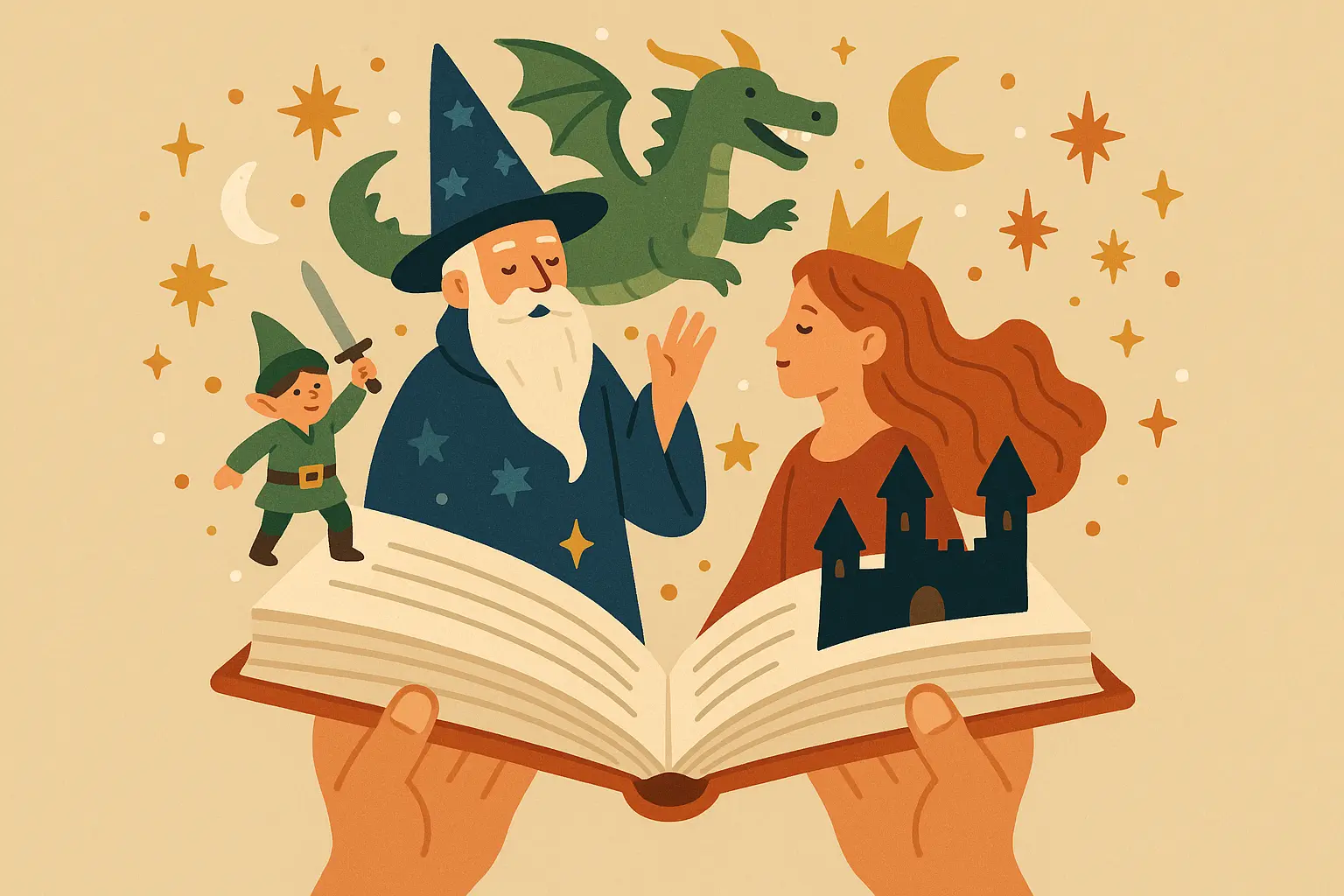
The Real Reason These Stories Matter
At the end of the day, these stories have survived because they’re basically life hacks disguised as entertainment. They’re the friend who tells you hard truths in a way that doesn’t make you defensive. Whether you’re dealing with a workplace bully (every Cinderella story), trying to build something from nothing (David and Goliath), or just figuring out how to be a decent human being (pick any of them), these old stories have been there, done that, and lived to tell the tale. Literally.
What makes these 25 folktale stories truly special isn’t their age – it’s their continued relevance in our rapidly changing world. From “The Tortoise and the Hare’s” lesson about consistent effort to “Mulan’s” exploration of gender roles and family duty, these narratives address fundamental human experiences that transcend time and culture.
The most remarkable thing about these folk tales is their ability to work on multiple levels at once. Kids enjoy the surface adventures while adults appreciate the deeper psychological and moral insights. This multi-layered approach is something every modern storyteller should study and copy.
The six things we’ve explored – cultural authenticity, universal themes, narrative structure, age appropriateness, educational value, and adaptability – give you a framework for evaluating any story you encounter or create. These standards help separate truly valuable narratives from mere entertainment.
Whether you’re studying these traditional folk tales or creating contemporary story examples that capture similar depth, the principles remain constant across all effective narrative forms.
As you explore these folktales, remember that they represent thousands of years of human storytelling evolution. Each tale survived because it offered something essential – wisdom, comfort, inspiration, or insight – that people needed to hear. In our digital age, we still need these same elements in our stories, whether we’re writing novels, creating content, or simply sharing experiences with others.
These aren’t museum pieces – they’re living, breathing guides for navigating the same human challenges we face today. The names and settings might change, but the core struggles remain the same. And that’s exactly why these stories will keep getting retold, adapted, and reimagined for generations to come.



Add comment